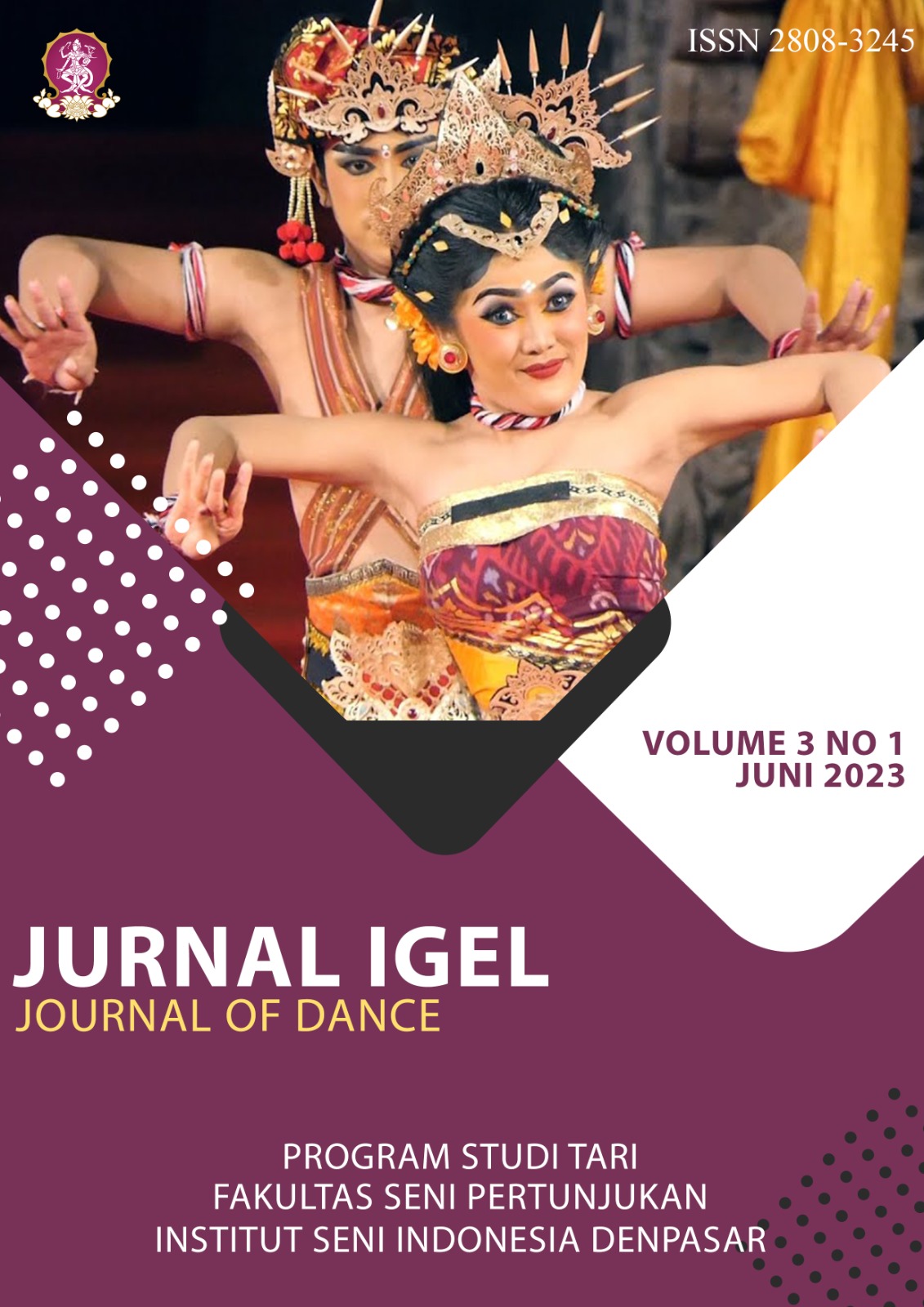ABURU SATA
DOI:
https://doi.org/10.59997/journalofdance.v3i1.2377Abstract
The Aburu Sata dance is a contemporary dance work that takes the theme of mulat sarira which is inspired by the Balinese folklore of an animal hunter to fulfill his needs, named Lubdaka. The creator is interested in elevating lubdaka’s emotional traits which include feelings of ambition, restlessness and regret. This dance piece is danced by six male dancers with almost the same body posture. The purpose of the creation of this dance work is to criticize the reality in today’s life throught Lubdaka’s story as a source of inspiration, that many people forget their identity and purpose in life because they are still heavily influenced by the Sad Ripu nature eithin themselves. The method of creation used in creating this dance work is using the Alma M. Hawkins method wich includes exploration, improvisation,forming, because this method is easier for creators to unsderstand to use as a method of creating art. This dance work uses minimalist make up and clothing including udeng, ¾ length pants, shirt, belt, rempel sesaputan, kamen kancut, bracelets, anklets. It is hoped that this dance work will become a performing art that can be enjoyed by people of all groups and can understand that Balinese folkore is not only a story or a night tale, but a story that contains meaning and moral values that are a reflection for us to improve ourselves so that wecan live to be better.
Keywords: Aburu Sata, Emotional nature, Dance work
Additional Files
Published
Issue
Section
License
Copyright (c) 2023 I Made Dendi Dwi Karyana, I Ketut Sutapa, Ni Wayan Suartini

This work is licensed under a Creative Commons Attribution-NonCommercial-ShareAlike 4.0 International License.
Volume 2 Nomor 1, Juni 2022








